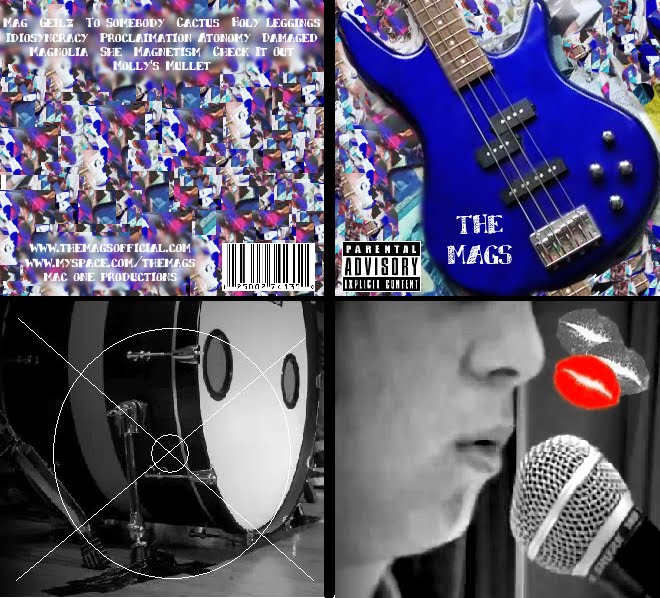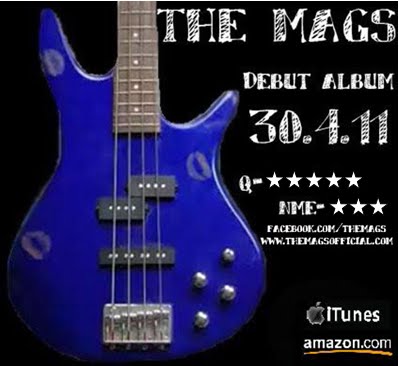Digipacks were first created by MeadWestvaco, and their product, called Digi-Pak, is trademarked. However, as the format became more popular and began to be used by more manufacturers, the generic "digipack" came to be used to describe all soft CD packaging.
I found a website that has the top 100 CD covers on (http://rateyourmusic.com/list/fedderedder/rolling_stones_100_greatest_album_covers) so I chose a few from the website that I liked the best to put on this blog:
 This is CD cover for The Rolling Stones album called "Sticky Fingers" I really liked this design because I think that black and white with red writing works really well and makes it stand out. If the picture of the trousers was in colour then the red writing would be lost and hard to see, but the use of black and white makes it bold and eye catching. Black and white with red is also the idea that we have for our own music video which is another reason why I chose this digipack because it may give me inspiration for when I create my own.
This is CD cover for The Rolling Stones album called "Sticky Fingers" I really liked this design because I think that black and white with red writing works really well and makes it stand out. If the picture of the trousers was in colour then the red writing would be lost and hard to see, but the use of black and white makes it bold and eye catching. Black and white with red is also the idea that we have for our own music video which is another reason why I chose this digipack because it may give me inspiration for when I create my own. This is another CD cover which I really liked of Joe Jackson. It's a very simple cover with a photograph and simple font writing in the top and bottom corner. The photography is very good in the way that the feet are central in the beam of light and it makes it interesting that they are facing diagnal rather that just straight forward or to the side. Again the CD cover is in black and white which I am going to do mine in so this can help me develop my own ideas.
This is another CD cover which I really liked of Joe Jackson. It's a very simple cover with a photograph and simple font writing in the top and bottom corner. The photography is very good in the way that the feet are central in the beam of light and it makes it interesting that they are facing diagnal rather that just straight forward or to the side. Again the CD cover is in black and white which I am going to do mine in so this can help me develop my own ideas. This album cover for Arctic Monkeys "Favourite worst nightmare" is another one that caught my eye because it is in black and white but also mixes the use of cartoon and photography. The prominant colour that appears apart from the black and white is green. The green along with the large colourful circles create a retro type of feel to the album that may be reflected in some of the songs from the album. I also like the perspective of the photograph of the building and as it is not face on, it makes it more interesting and abstract or makes us feel like we are really in that position looking onto the building. From this album cover I can take the inspiration of black and white with one prominant colour on top of it.
This album cover for Arctic Monkeys "Favourite worst nightmare" is another one that caught my eye because it is in black and white but also mixes the use of cartoon and photography. The prominant colour that appears apart from the black and white is green. The green along with the large colourful circles create a retro type of feel to the album that may be reflected in some of the songs from the album. I also like the perspective of the photograph of the building and as it is not face on, it makes it more interesting and abstract or makes us feel like we are really in that position looking onto the building. From this album cover I can take the inspiration of black and white with one prominant colour on top of it. This is the Kings of Leon album cover for "Youth and young manhood". I really like this design as it is simple but also really effective and stands out. As soon as I saw it, it reminded me of the Queen song "Bohemian Rhapsody" with the positioning of the heads. I thought this was a really clever idea as they have used a really well known concept and made it their own by having it more in cartoon form and also in black and white. From this CD cover it has given me the idea to maybe use intertextuality in my own digipack design.
This is the Kings of Leon album cover for "Youth and young manhood". I really like this design as it is simple but also really effective and stands out. As soon as I saw it, it reminded me of the Queen song "Bohemian Rhapsody" with the positioning of the heads. I thought this was a really clever idea as they have used a really well known concept and made it their own by having it more in cartoon form and also in black and white. From this CD cover it has given me the idea to maybe use intertextuality in my own digipack design. I like this album cover by Muse as it different to the others that I have looked at in the sense that it is not black and white. It also uses a mosaic type of style which I really like and think is effective. There is a small person that is also featured in the cover and it makes it look disorientating and almost like a sci fi type of genre. The font that is used on this album cover is very simple and easy to read which is true to most of the alternative rock album covers I have looked at. This album cover has given me new things to think about with designing my own digipack as it means I do not have to follow the theme of black and white.
I like this album cover by Muse as it different to the others that I have looked at in the sense that it is not black and white. It also uses a mosaic type of style which I really like and think is effective. There is a small person that is also featured in the cover and it makes it look disorientating and almost like a sci fi type of genre. The font that is used on this album cover is very simple and easy to read which is true to most of the alternative rock album covers I have looked at. This album cover has given me new things to think about with designing my own digipack as it means I do not have to follow the theme of black and white.



























